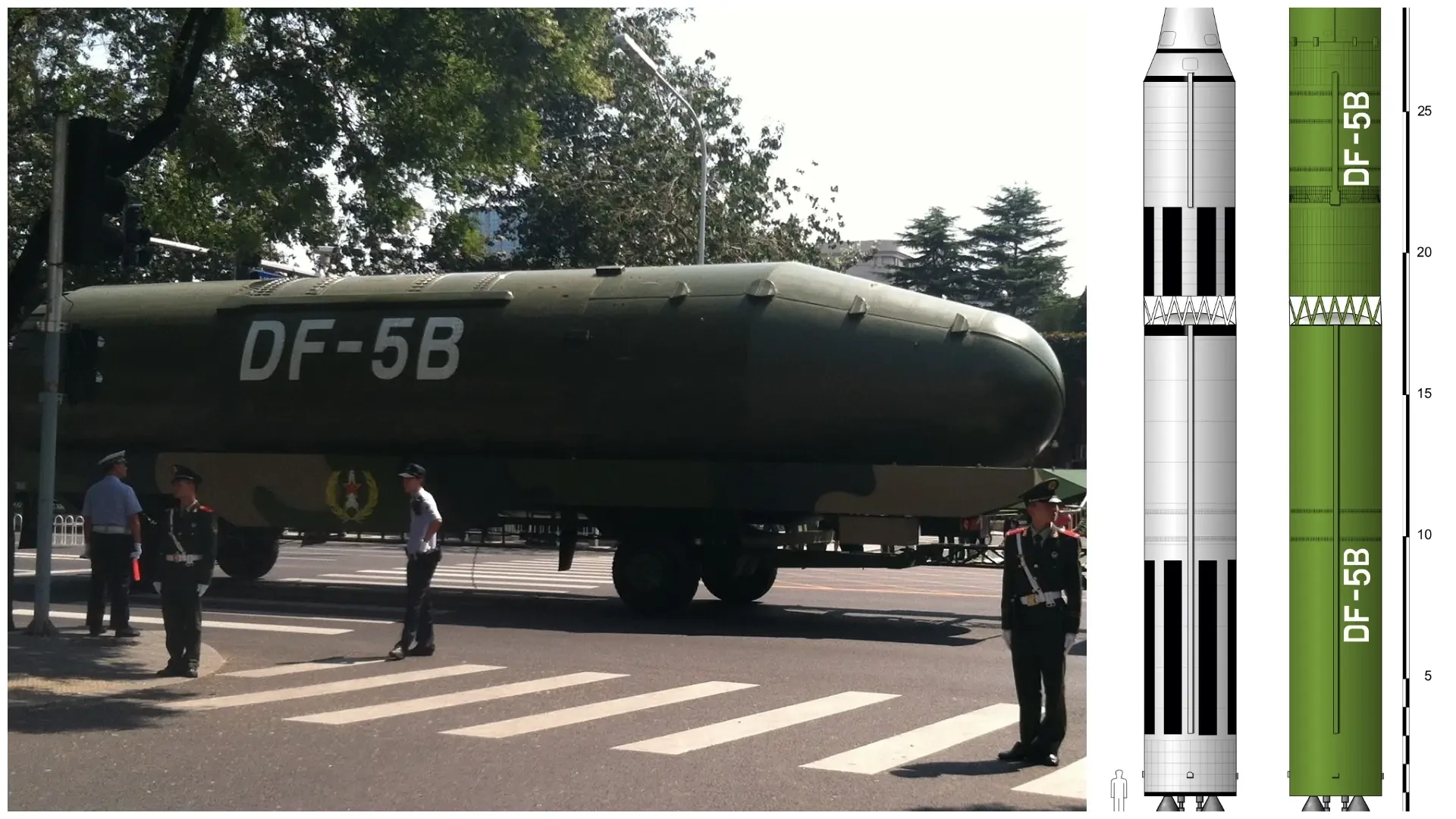China DF-5 missile: Chinese state media recently put the spotlight on the Dongfeng 5-B, or DF-5B, its nuclear-capable intercontinental ballistic missile.
The ICBM can reportedly carry up to 10 independently targetable warheads, each with a yield estimated to be 200 times more powerful than the bomb used by the US during World War II on Japan’s Hiroshima. The strategic community has been wondering why the state-run CCTV showcased several capabilities of this deadly missile, given that its original version has been in service of the Chinese military since the 1980s. The reasons may be the recent global developments, and a message to the world, particularly the US, not to attack China like it did with B2 bombers to target Iranian nuclear sites. Here is a detailed analysis:
What China revealed about DF-5B
The Chinese tom-tomming about the DF-5B took place in June, around the time the US sent its stealth bombers and submarine-launched missiles to target Iranian nuclear sites in June.
The DF-5B is a two-stage, silo-based ICBM. It was in development in the 1970s and entered service in 1981.
The Chinese ICBM is 32.6 metres long, 3.35 metres in diameter, and weighs approximately 183 tonnes.
It has a range of around 12,000 kilometeres, meaning it can reach most of the continental United States, as well as Europe.
China’s DF-5B: Did state media really share anything unknown?
Much of the details revealed by the Chinese state media on DF-5B is in fact known publiclly. The Chinese state media did not mention if there was an upgrade to DF-5B. Its 3-4 megatonnne warhead yield, and the 12,000 km range are consistent with known capabilities for such ICBMs.
China has missiles like the DF-41 and DF-27 that are more advanced.
Then why the ‘revelations’ by state media?
The main thing to note is that it’s a departure for the Chinese government from the secretive nature of its nuclear weapons programme. While much of the details are revealed to the world anyway through media reports and foreign intelligene assessments, the government and its state media are often tight-lipped on these. Perhaps the move is to provide more transparency to the Chinese people, than to reveal new technological advancements.
‘Don’t attack us’: China’s deterrence messaging in shocasing nuclear missile
According to analysts, the revelations about the DF-5 are a clear signal to global powers, particularly the US and its allies, about China’s nuclear capabilities.
Amid the rising global tensions, China is possibly seeking to show off its deterrence powers.
Such tensions have been brewing over Chinese territorial ambitions in South China Sea and military posturing against Taiwan, the democracy that Beijing considers its own territory that must be annexed even if by force.
DF-5B missile and US-China strategic race
The disclosures, feel observers, might be for proejcting China as a formidable nuclear power, signalling a challenge to Western narratives on global security.
It may be a calculated move to indicate that China has more advanced missile systems than the world is aware of.
The US assesses that China has more than 600 operational nuclear warheads, a number that Pentagon expects to grow to 1,000 by 2030. China has 320 missile silos at three major sites, as per the US defence department estimates.
Domestic pride, regional power projection
With showcasing its nuclear missile, the Chinese state media may have been trying to appeal to its national audience, to increase national pride about its miliary capabilities, so that people support the Chinese Communist Party rule. China may be using such calibrated revelations to position itself as a leader in regional security matters.
China is modernising its nuclear weapons
It should be noted that the revelations about offensive capabilities of the DF-5B is in contrast with Chinese commitment of nuclear non-agression and no-first-use policy.
In reality, China has been modernising its nuclear weapons.
Its warhead stockpile is expanding.
Missile systems like DF-27 are being developed in order to carry hypersonic glide vehicles.
Powers like US and the West are taking note, and in future, this could cause escalation in global tensions.
